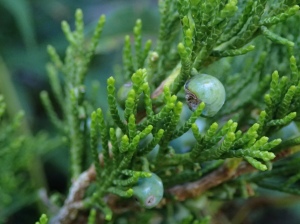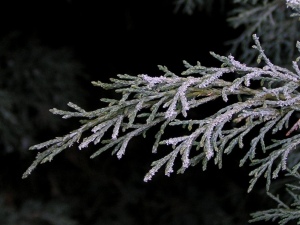Family: Cupressaceae
Common Name: savin juniper
Origin/Ecology: Native to central and southern Europe
Habit: Shrubby conifer, spreading, to 4-6′ tall and 5-10′ wide.
Leaves: Dark green with no purplish colour in winter. Crushed foliage releases unpleasant aroma. Can have scale-like or awl/needle-like leaves.
Leaf Arrangement: Opposite
Flowers and Fruit: Cones (pollen and seed-bearing) usually appear on different plants. Male plants produce catkin-like pollen cones. Female plants produce fleshy, berry-like, bluish-black seed cones.
Bark: Brown bark on mature stems peels in strips.
Water Use, Soil: Average, medium moisture, well-drained soils. Tolerant of wide range of soils, including clay and limestone. Intolerant of wet soils. Somewhat drought tolerant once established.
Exposure: Full sun.
Landscape Uses: Group or mass, foundations, hedge.
Limitations: Tip and needle blights, cedar-apple rust, root rot, canker, aphids, bagworms, webworms, borers, scale, spider mites.
Other Features: Tolerant of urban air pollution.


